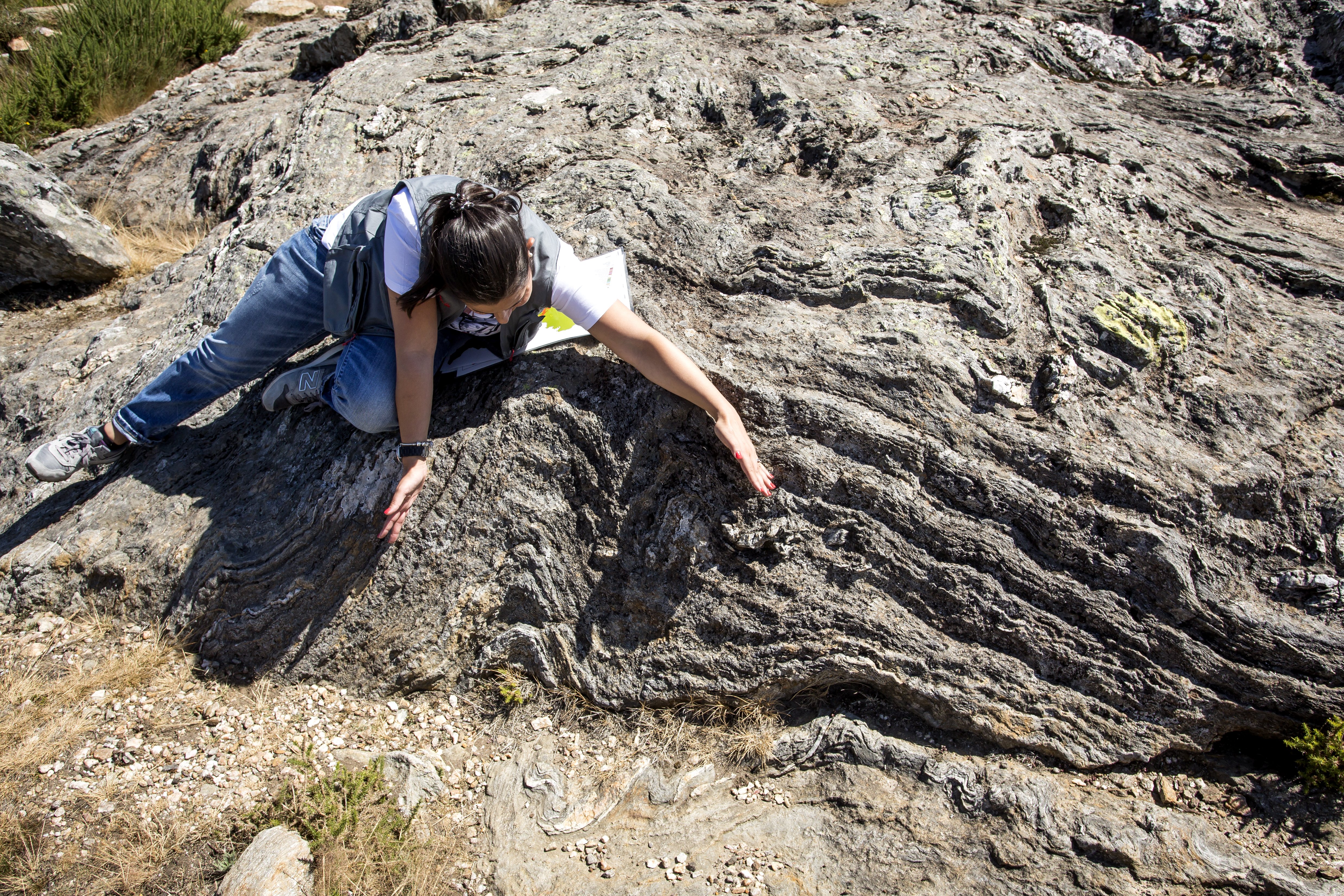Geosite 8 Castanheira Bend Field
Twisting without breaking
Rocks are like books in which we can read different chapters in the history of Planet Earth. Although very resistant when exposed to the colossal forces of the planet, they can behave as if they were a bar of plasticine, which, when compressed, bends and keeps its shape. This is what happened with the rocks found in the “Campo de Dobras da Castanheira“, a geosite of national importance, which preserve the folds of different amplitudes resulting from the transformations undergone during the formation of the supercontinent Pangeia.
The Castanheira fold field is drained by the Castanheira stream, a tributary of the Caima river. This watercourse serves as a refuge for various species, such as bryophytes (predominantly of the Sphagnum genus) and vascular plants like the cervum (Nardus stricta). In the rockier areas, you’ll find roof rice(Sedum brevifolium) and the Iberian endemic saffron (Crocus serotinus). Birds of prey, such as the redshank (Circus pygargus), the common kestrel (Falco tinnunculus) or the elusive hawk (Accipiter nisus) fly high above the area.
Geological Information
The area to the southeast of the “Pedras Parideiras” is of particular interest because the outcropping rocks are intensely folded. Folds” are deformations in rocks where originally flat surfaces are curved. In fact, the rocks at this geosite were formed more than 500 million years ago in the depths of an ancient sea, where alternating layers of sediment were deposited horizontally which, through diagenesis and metamorphism, gave rise to the metamorphic rocks present. The compression movements, which took place around 350 million years ago, caused an increase in pressure and temperature, which gave the rocks a ductile behavior, and they formed folds of varying amplitude. In this region, there are also numerous quartz veins, whose light color and high resistance to weathering makes it easy to see the folds.
The importance of this geosite is increased by the fact that the folds and foliations present in these materials show a polyphase orogenic action. The last generation of folds was attributed to the third phase of Variscan deformation, although one of the outcrops shows a fold attributed to the second phase. The folds that mark the third phase of the orogeny have a NW-SE axial plane with high inclinations, generally greater than 65 degrees to the SW and NE. The axis of the folds tilts between 10 and 20 degrees, systematically to the SE.




